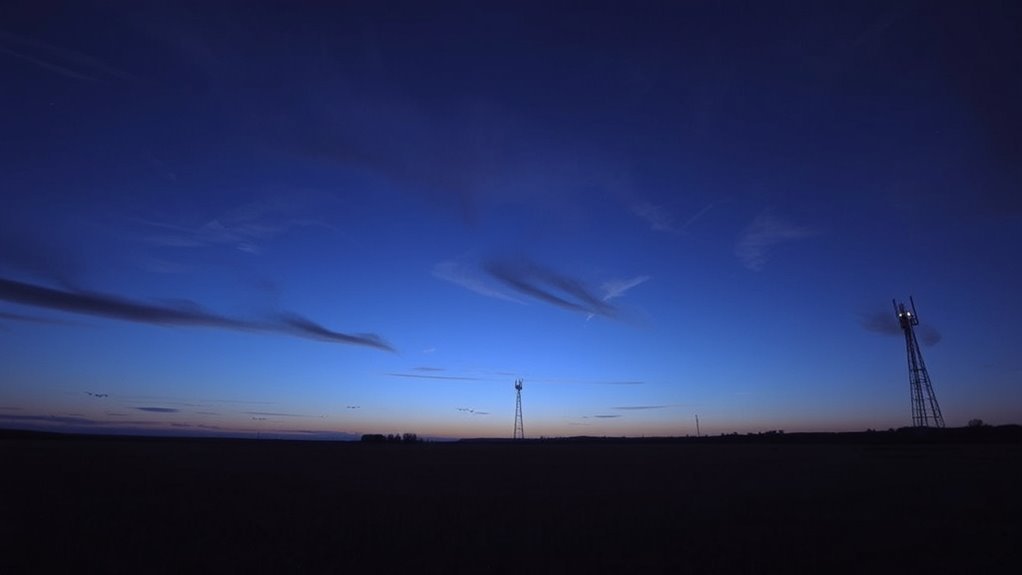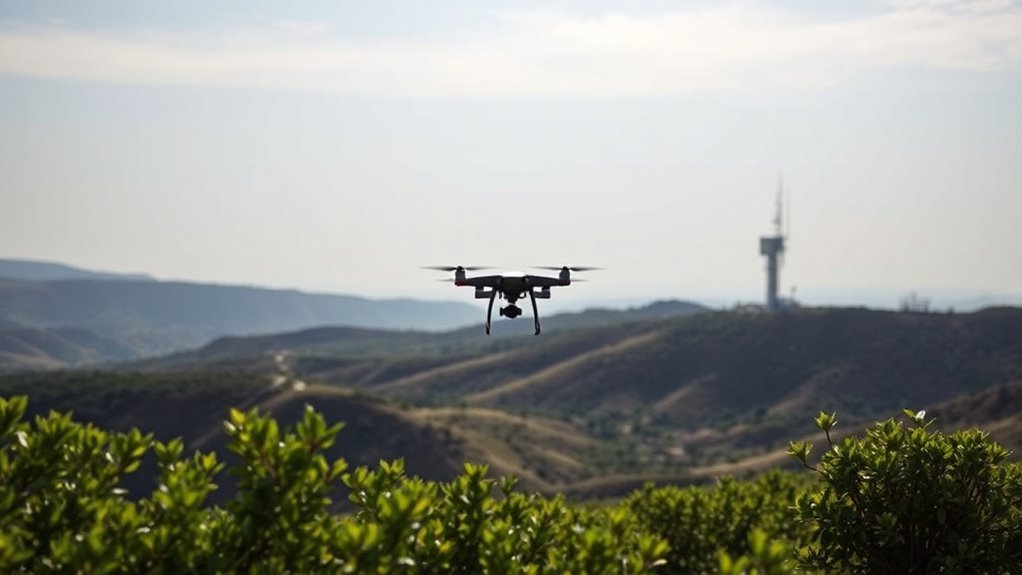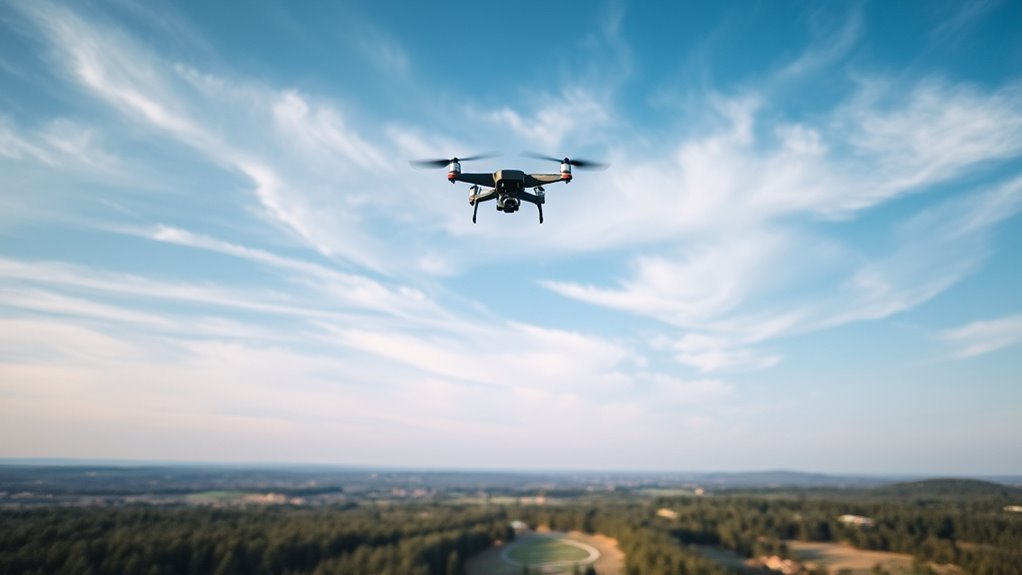You’ll find radar struggles detecting small drones due to their minimal radar cross-section and stealth materials that weaken signal returns. Low altitude flight hides drones behind terrain features, while rapid maneuvers disrupt tracking algorithms. Environmental factors like rain, fog, and urban clutter further degrade radar performance, causing false alarms and missed detections. Because of these inherent limitations, combining radar with other sensor types becomes essential. Understanding these challenges will clarify why integrated detection strategies are critical.
Radar Cross-Section Challenges of Small Drones

Although radar systems are designed to detect objects by reflecting radio waves, small drones pose a significant challenge due to their minimal radar cross-section (RCS). You’ll notice that these drones often incorporate stealth technology, deliberately engineered to reduce radar reflections through optimized shapes and materials. Additionally, radar absorption coatings further diminish the return signal, complicating detection efforts. Because the RCS is proportional to the surface area reflecting radar waves, small drones inherently produce weak echoes, blending into background noise. This limitation restricts radar systems’ ability to reliably identify and track these targets, especially when freedom of movement and low observability are priorities. Understanding these factors is vital if you want effective countermeasures against drones exploiting low RCS and advanced stealth technology to evade detection.
Impact of Low Altitude and Terrain on Radar Detection

When small drones operate at low altitudes, their radar detection becomes considerably more challenging due to terrain masking and ground clutter. At low altitude, radar signals often reflect off terrain obstacles such as buildings, trees, and hills, creating a complex background that masks the drone’s signature. This clutter increases false alarms and reduces detection probability, forcing radar operators to discriminate between static terrain reflections and dynamic drone echoes. Additionally, terrain obstacles can block or attenuate radar beams, creating shadow zones where drones remain undetected. You must consider these factors when relying on radar for small drone surveillance, as low altitude flight exploits natural and man-made terrain features to evade detection, limiting radar’s effectiveness in maintaining situational awareness and safeguarding freedom of movement in contested airspace.
Maneuverability and Speed Complications in Tracking
Since small drones can rapidly change direction and speed, tracking them with radar presents significant challenges. You’ll find that conventional tracking algorithms struggle to maintain consistent target acquisition when drones execute abrupt maneuvers, causing frequent signal loss or misclassification. The radar resolution, while improving, often lacks the granularity needed to distinguish these agile movements from clutter or noise. This limitation forces tracking systems to either increase scan rates—potentially reducing coverage—or accept decreased accuracy. As a result, you’re faced with a trade-off: either compromise on continuous tracking fidelity or limit operational freedom due to increased false alarms. Understanding these constraints is vital if you want to develop or rely on radar systems capable of effectively monitoring small, fast-moving drones without sacrificing freedom of movement or operational flexibility.
Environmental Factors Affecting Radar Performance
Even under ideal conditions, environmental factors can considerably degrade radar performance in detecting small drones. You must recognize that variable weather conditions—such as rain, fog, and snow—attenuate radar signals, reducing detection range and accuracy. Additionally, atmospheric turbulence causes signal scattering, further complicating target identification. Signal interference, both natural and man-made, can mask or distort radar returns from small, low-RCS drones, making them harder to distinguish from background noise. Urban environments exacerbate this with multipath reflections and clutter, creating false echoes that can overwhelm radar processing algorithms. Understanding these environmental limitations is essential if you want to rely on radar for drone detection. You need to account for these factors when evaluating radar capabilities, as they inherently restrict the freedom to detect and track small drones reliably under varied operational conditions.
Complementary Technologies for Enhanced Drone Detection
Radar alone can’t always provide reliable detection of small drones, especially given environmental and technical challenges. To enhance detection capabilities, you should integrate complementary technologies like acoustic sensors and optical cameras. Acoustic sensors capture the unique sound signatures of drone motors, offering detection even in cluttered environments where radar signals weaken. Optical cameras provide high-resolution visual confirmation, enabling precise identification and tracking, particularly in line-of-sight conditions. Combining these modalities allows you to cross-validate detections, reducing false positives and enhancing situational awareness. By leveraging acoustic and optical data streams alongside radar, you gain a multifaceted detection approach that compensates for radar’s inherent limitations, preserving your operational freedom and security. This integrated strategy is essential for robust, real-time small drone detection in dynamic environments.

